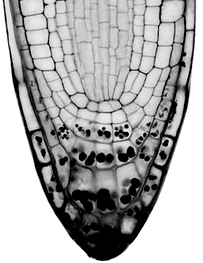

Development has always been at the centre of life sciences. It represents many of the fundamental principles of life on earth. To generate a body or organ, the blueprint always starts with a zygote or primed stem cell that is either pluripotent or totipotent. After a series of highly regulated cell divisions followed by pattern formation, morphogenesis is eventually achieved.
We have long been fascinated by these important aspects of development. In the past, we have used several plant model systems to study stem cell maintenance, cell differentiation and pattern formation in the highly tractable root system. In recent years, we have gradually moved on to another extremely fascinating system - tomato trichomes, which can be regarded as the microorgans that protrude from the plant surface. They are extremely diverse in form and function. However, the developmental journey begins with a simple cell priming event that transdifferentiates protodermal cells into trichome precursor cells. These specialised cells not only form a pattern on the plant surface, but also undergo complex division/differentiation, eventually forming seven types of trichomes with different shapes and functions.
Over the past few years, we’ve been working to understand the underlying mechanism by which trichomes form, trying not only to dissect the molecular regulation of this type of organ, but also to answer some common developmental questions. Our current results suggest that this unique organ reflects a typical developmental paradigm involving both homeobox morphogens and Turing’s patterning theory.